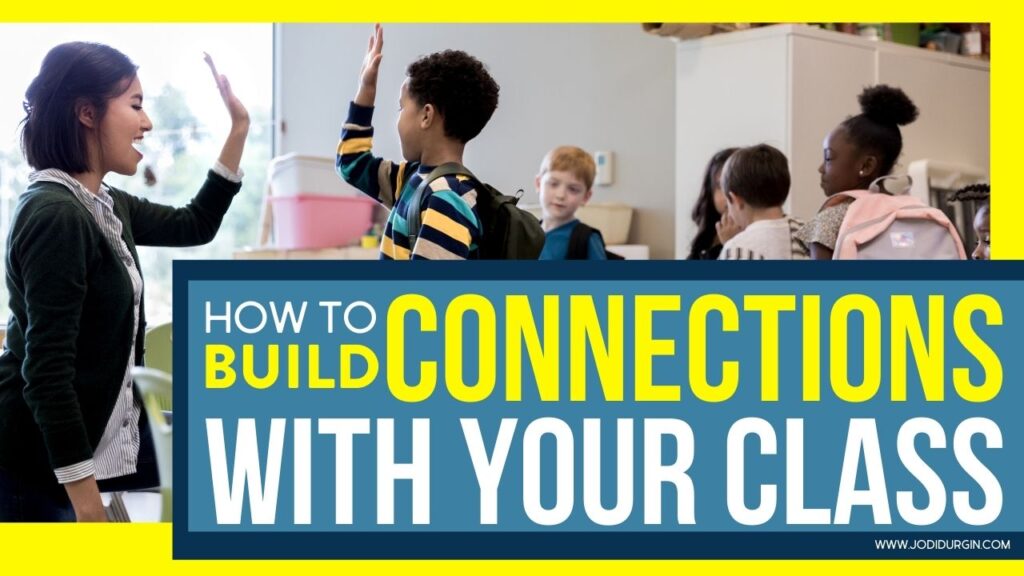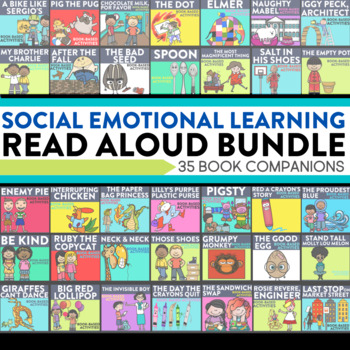If you are looking for ideas for how to connect with students, then you found the right place!
As teachers, we know that students learn best from people they know, like, and trust. The question is, how do we do that? Luckily, this post includes a list of ways to build relationships with elementary students. Additionally, this post includes answers to the following questions about connecting with students:
- Why is it important to connect with students?
- How do I connect with my students at the beginning of the school year?

Why is it Important to Connect with Students?
As mentioned above, students learn best from people they know, like, and trust. Teachers who take the time to connect with and get to know their students reap the benefits all year long. Building strong relationships with students can increase students’ motivation and engagement, which leads to improved academic performance.
How to Connect with Students in Class
Below are 10 ways to connect with your students during in-person learning.
1. Summer Letter
A summer letter introducing yourself to your students is a great way to connect with them whether you are remote or on-site teaching. You can typically get your students’ addresses from your school office. Students will be excited to receive a letter from their new teacher and you will begin to form new connections.
2. About Me Lesson
Get-to-know-you activities are typically focused on the teacher getting to know the students and the students getting to know each other. An all-about-you (the teacher) lesson is a great way for students to get to know their teacher! Share what you feel comfortable sharing about yourself with your students and give them opportunities to ask you interview questions. It is a fun idea to find a picture of yourself at the age your students are. Another way to teach this lesson is to find a picture of yourself from the summer or doing something you enjoy and have your students ask you questions about the picture.
3. Classroom Brainstorm
Brainstorm with your class what a great classroom looks like, sounds like, and feels like. This is a great way to start to form connections as you state your expectations for the categories and your students state their ideas. It also helps set the tone for your classroom and creates an environment where students know they are active participants in the classroom and their ideas and thoughts are valued.
4. Get-to-Know-You Activities
This one may seem simple, but get-to-know-you activities are a great way to start to form connections between you and your students and your students with their new classmates. Some activities can include two truths and a lie, find someone who, all about me activities, and other icebreakers. Check out these all about me activity ideas! Include yourself in doing all the activities, too!
5. First Day Jitters activity
First Day Jitters is a fun first day of school book about a teacher who is nervous for the first day of school, but throughout the book students will think that it is a kid who is nervous. A great activity to do after reading this book is to graph how the students felt about the first day of school. It creates awareness that they aren’t the only ones feeling nervous. Connections will form as your students see people were feeling similar to them and that even you were nervous!
First Day Jitters is one of my favorite read alouds that help me connect with my students at the beginning of the year! Check out my other favorite first day of school read aloud books!
6. Show and Tell
Show and tell is something all kids enjoy no matter their age! Kids will love bringing in something from home to share about with their new classmates, and they will start to form connections with each other and you as they take a peek into each other’s interests. Make sure that you do show and tell, too! This will also give you a peek into your students’ interests that you can use to form connections.
7. STEM challenge
STEM challenges require teamwork! These can be great ways to start to foster community in your classroom in the first few weeks of school and as the school year goes on. Students will start to form connections with each other and with you. Be an active participant in the STEM challenges and bounce around to each group.
8. All About Me Bag
All About Me Bag is a fun activity that both you and your students can complete. Give each student a paper bag and have them put items in it that describe them. Students can show the items in a show-and-tell fashion and make connections with you and their peers based on what they included in their bag.
9. Stand Up Sit Down
Sit down stand up is a fun activity that gets your students moving as a bonus! Start with all of your students sitting. Say a statement and have students stand up or stay seated depending if they agree with it. You could say, “I like pizza” and students who like pizza will stand up and students who don’t will stay seated. Play several rounds with different statements and make sure that you stand up and sit down with them! This is such a fun way to connect with students!
10. Student interviews
Interviews are a great way to get students to learn about each other and about you. I suggest providing a set of questions for students to ask. Have students ask each other the questions and ask you the questions. They will start to see what they have in common with each other and you!
11. Use a Bitmoji
If you don’t know what a bitmoji is, it is an animated version of yourself! I have even seen some teachers create Flat Stanley versions of themselves and call it a “flat teacher.” You can print out your bitmoji and send it to your students so they have a mini you! Your bitmoji can also be used in a Google classroom and on assignments.
12. Read Aloud Picture Books
Children love to be read to! The experience of reading aloud a book to your students offers them the opportunity to connect with you during a fun and relaxed time. Your students learn about and connect with you as they hear your voice and see you interact with the book. It’s a positive experience that lends itself to relationship building. Be sure to check out these SEL read aloud book activities! They offer great opportunities to discuss important social emotional learning topics and connect with students. These SEL units also include read aloud lessons and activities.
We hope you found this list of ways for how to connect with students helpful! If you did, then you may also be interested in these posts:


